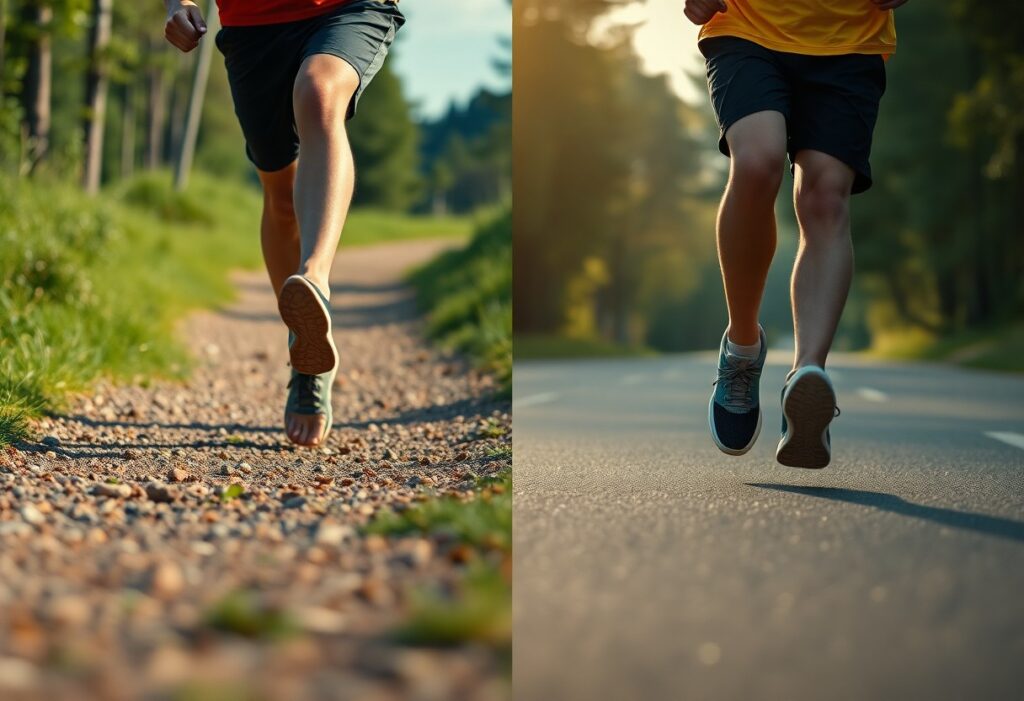
Have you ever considered the significant impact that your selection of running shoes has on your running economy? This in-depth analysis explores the distinct effects of barefoot running shoes in comparison to their cushioned counterparts on your athletic performance, overall efficiency, and the quality of your running experience. Discover how each type of footwear influences your biomechanics, the potential for injuries, and your energy expenditure. This knowledge empowers you to make informed choices that align with your personal running goals. Whether you’re a seasoned marathoner or just starting your running journey, understanding these differences can significantly enhance your training effectiveness and overall enjoyment of the sport.
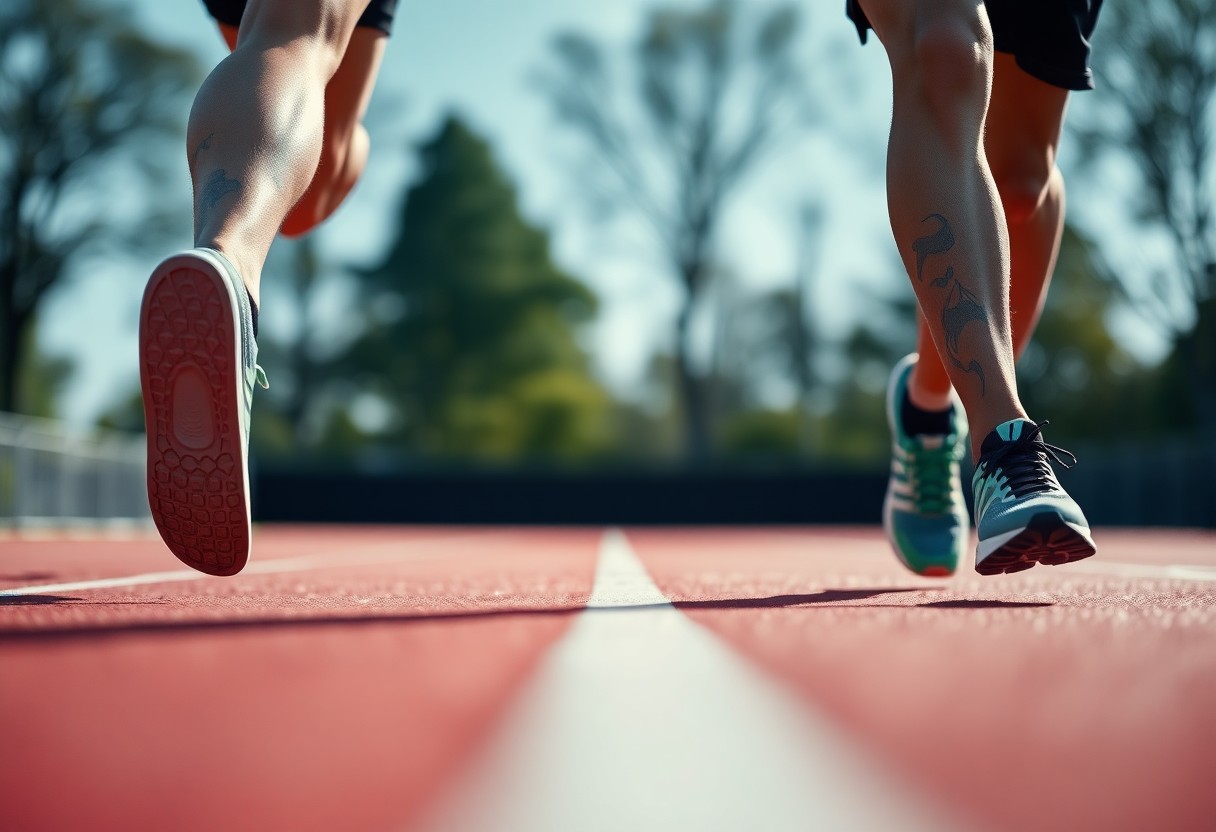
Delving into the Science of Running Economy: A Comprehensive Biomechanical Analysis
To truly grasp the idea of running economy, one must delve into the biomechanical principles that determine how efficiently your body uses oxygen during running. Key components such as muscle activation, stride efficiency, and the overall biomechanics of running play pivotal roles in influencing your performance. By scrutinizing factors like your footstrike pattern, angles of flexion, and vertical oscillation, you can uncover significant insights into how barefoot shoes could enhance or impair your running economy when compared to conventional cushioned shoes. Understanding these elements is essential, as they can profoundly affect your speed, endurance, and overall running experience over time.
Analyzing Oxygen Consumption Rates: Insights from Comprehensive Meta-Analyses
A thorough meta-analysis encompassing numerous studies indicates that runners who choose barefoot shoes typically exhibit lower oxygen consumption rates than those who prefer cushioned footwear. This fascinating finding implies that minimalist shoes promote a more efficient running style, allowing you to maintain a faster pace while using less energy. Such efficiency is particularly beneficial during long-distance races, where energy conservation is vital for achieving optimal performance and endurance.
Understanding Ground Contact Time: Enhancing Performance Through Foot Strike Patterns
Your ground contact time can vary significantly depending on your foot strike pattern, which directly influences your overall running efficiency. Runners who utilize a forefoot or midfoot strike often experience reduced ground contact durations, enhancing propulsion and minimizing energy loss. Conversely, runners with a rearfoot strike may face longer ground contact times, which can lead to higher energy expenditure. Transitioning to barefoot shoes frequently encourages a more natural foot strike, potentially enhancing your running economy.
Research findings reveal that elite runners commonly maintain an average ground contact time ranging from 185 to 220 milliseconds, facilitating swift transitions to subsequent strides and contributing to a more effective running rhythm. As you begin using barefoot or minimalist footwear, you may observe that adjustments in your foot strike lead to shorter ground contact times, consequently improving your propulsion. This alteration not only boosts your speed but may also lower your risk of injury. Therefore, understanding your ground contact time and foot strike patterns can empower you to choose the right footwear that optimizes your running performance.
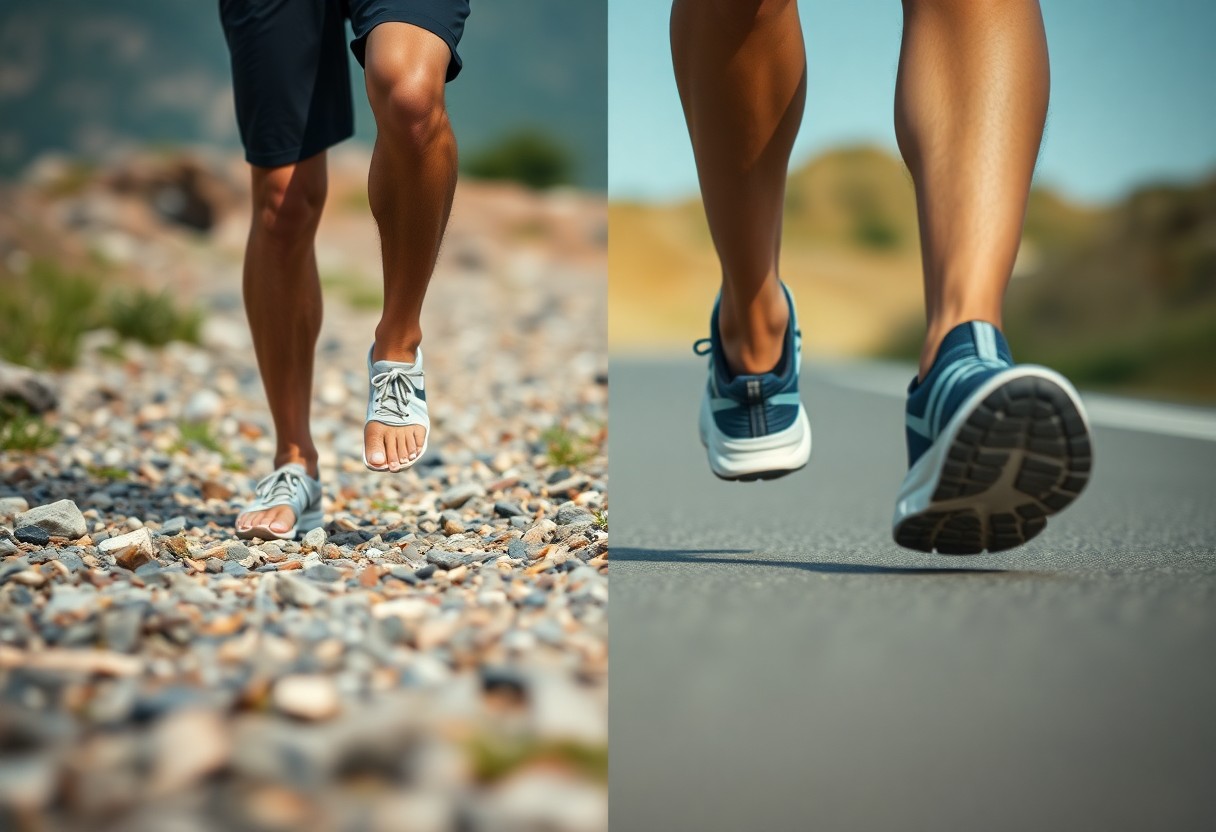
Injury Prevention Strategies: Valuable Insights from Longitudinal Research Studies
Longitudinal studies investigating running injuries offer essential insights into the effects of various shoe types on your long-term health. By recognizing the relationship between footwear choices and injury rates, runners can make informed decisions that not only enhance performance but also reduce the risk of injuries. These comprehensive studies monitor injury occurrences over time, examining specific aspects such as biomechanics, gait adaptability, and muscle strength. This holistic perspective is vital for developing effective injury prevention strategies that cater to individual needs.
Evaluating Tibial Stress Fracture Rates: A Comprehensive Two-Year Follow-Up Study (Hollander et al. 2021)
The study conducted by Hollander et al. (2021) revealed that runners wearing barefoot shoes experienced significantly lower tibial stress fracture rates compared to those utilizing cushioned footwear. Over a two-year observation period, participants in the barefoot group reported a remarkable <a href="https://limitsofstrategy.com/barefoot-footwear-ergonomic-solutions-for-work-environments/">30% reduction</a> in stress fractures, highlighting the potential benefits of adopting a minimalist approach to running shoes. This outcome suggests a possible link between enhanced proprioception and a reduced risk of injury, which is critical for runners aiming to maintain their health and longevity in the sport.
Understanding Patellofemoral Joint Loading: Implications for Long-Term Health
Monitoring patellofemoral joint loading during running reveals that users of barefoot shoes often experience alterations in loading patterns, which may contribute to a decreased risk of developing chronic knee issues. The absence of excessive cushioning allows for a more natural foot strike, thereby mitigating impact forces on your joints over time. Researchers have documented improved biomechanics among barefoot runners, indicating a protective effect against long-term injuries.
Investigating the influence of footwear on patellofemoral joint loading yields critical insights into the long-term implications for knee health. By incorporating barefoot shoes into your routine, you may foster a more effective distribution of forces throughout each stride, resulting in lower peak loads on your patellofemoral joint. One study highlighted that runners transitioning to barefoot footwear significantly reduced their knee joint loading, leading to decreased wear and tear on cartilage and ligaments. This adaptive mechanism is vital for preventing conditions such as patellofemoral pain syndrome, which commonly afflicts many runners who rely on cushioned footwear. Ultimately, your choice of running shoes can profoundly affect your joint health and your overall strategy for injury prevention.
Innovations in Footwear Technology: Advancements Transforming the Running Experience
Recent innovations in footwear technology are drastically reshaping the running experience by enhancing both performance and comfort. Cutting-edge designs integrate advanced materials and features that specifically address the diverse needs of individual runners. From improved cushioning systems to adaptive fit technologies, the modern landscape of running shoes presents a variety of options that can optimize your running economy while minimizing injury risks. This evolution not only reflects a deeper understanding of biomechanics but also caters to the preferences and requirements of various running communities.
Leveraging Pressure Sensor Mapping: Discoveries from the Latest Xero Shoes Models
Utilizing pressure sensor mapping technologies, the latest Xero Shoes models provide invaluable insights into foot dynamics. This innovative technique evaluates pressure distribution during running, allowing you to make informed footwear decisions based on your unique gait characteristics. By pinpointing pressure hotspots and optimizing designs accordingly, Xero Shoes enhance your stability and elevate overall performance across different terrains, significantly refining your running economy.
The Advantages of Moisture-Wicking Materials: Essential Features for Marathon Conditions
Moisture-wicking materials employed in contemporary footwear are revolutionary for distance runners, particularly during marathons. These advanced fabrics efficiently draw sweat away from your skin, ensuring that your feet remain dry and comfortable over long distances. Enhanced breathability helps to prevent overheating, while antimicrobial properties combat odor, allowing you to feel fresh even in the heat of competition.
During marathons, where you may be on your feet for extended periods, having shoes equipped with moisture-wicking materials can significantly impact your performance. Technologies such as *Dri-FIT* or *CoolMax* facilitate rapid evaporation of sweat, preventing blisters and minimizing the risk of your foot slipping inside the shoe, thereby enhancing your stability and comfort. With these innovative features, you can focus on achieving your best performance rather than being distracted by discomfort. When facing extreme weather conditions, selecting footwear with the right moisture-wicking capabilities becomes not just a lifestyle choice, but a crucial necessity for performance.
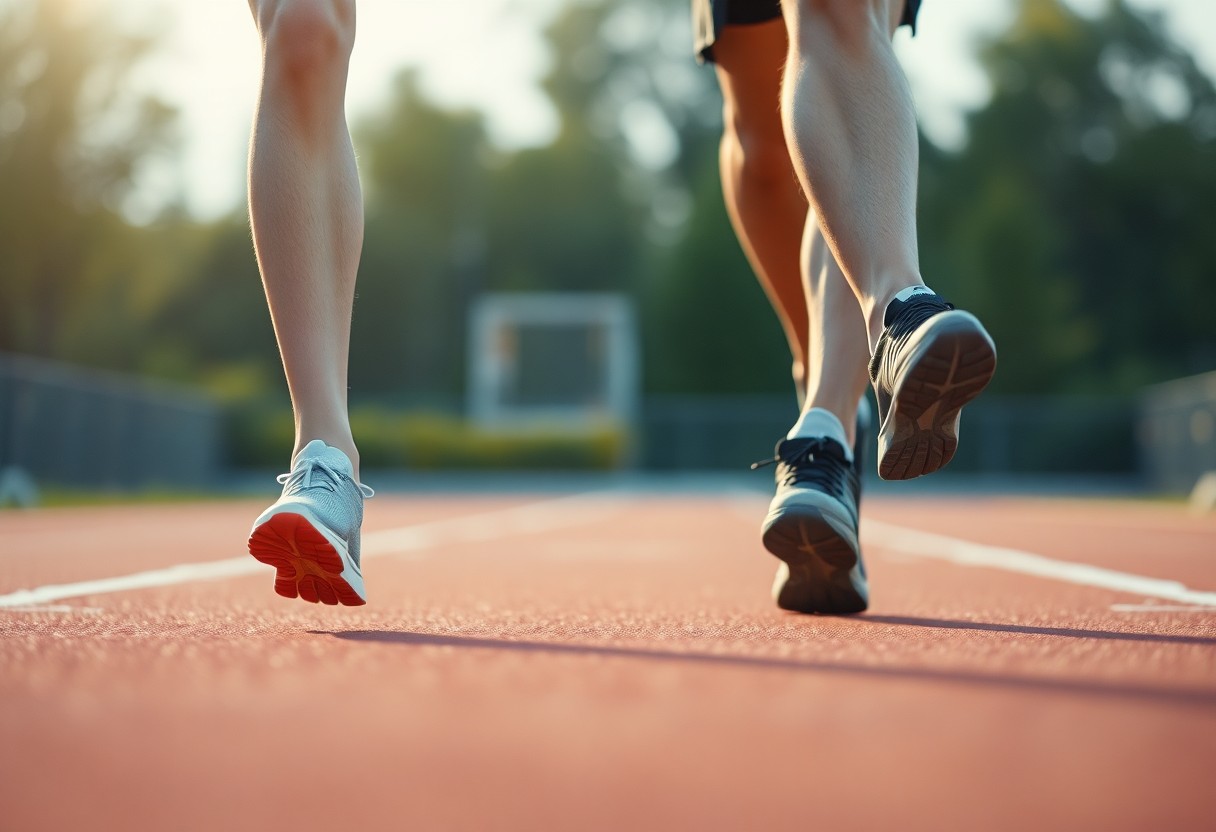
Expert Guidance for Runners: Selecting the Best Footwear for Optimal Performance
Choosing the right footwear can dramatically influence your running performance and overall experience. Essential considerations such as your running style, frequency of use, and personal comfort play vital roles in making the most suitable choice. Whether you gravitate towards barefoot shoes for a more natural feel or prefer cushioned options for enhanced support, prioritizing how the shoe aligns with your specific needs is critical. Engaging in trial runs with various styles can help you identify what works best for your unique running profile and objectives.
Evaluating Your Personal Running Style: Key Factors for Effective Shoe Selection
Your running style is a significant determinant of the type of footwear that will best meet your needs. If you are a forefoot striker, lightweight barefoot shoes may deliver the responsiveness and feedback you seek. On the other hand, heel strikers generally benefit from increased cushioning to absorb impact. Observing your gait and considering integral factors such as speed, distance, and terrain will empower you to align your shoe choice effectively with your unique biomechanics and performance goals.
Terrain and Conditions: The Impact on Shoe Performance and Comfort
The terrain on which you run has a considerable effect on shoe performance, influencing traction, stability, and comfort across your running sessions. Various surfaces, including trails, roads, and tracks, require distinct shoe features; for example, trail shoes often come equipped with deeper treads for enhanced grip, while road shoes prioritize cushioning for hard surfaces. Adapting your footwear to the terrain not only enhances performance but also decreases the chances of injury.
Your footwear selection also interacts with specific environmental factors such as ground softness, inclines, and weather conditions. Wet or loose surfaces demand shoes with superior grip, while hard and flat surfaces may necessitate additional cushioning for comfort and safety. Additionally, if you frequently run in diverse conditions, possessing multiple pairs designed for different environments will help you maintain optimal performance and comfort. Investing in footwear with versatile attributes that can adjust to a variety of terrains will empower you to tackle any running challenge with confidence and ease.
Future Insights: The Evolving Landscape of Running Footwear Choices
Embracing Minimalism in Running Footwear: A Shift Towards Natural Movement
As the running community increasingly embraces minimalist designs, you may find yourself drawn to the numerous advantages that barefoot shoes offer, such as improved proprioception and natural movement patterns. This trend is supported by research suggesting that runners can achieve greater efficiency and lower injury rates when transitioning correctly to less cushioned footwear. The market, teeming with innovative alternatives, suggests a future where your decisions are influenced not only by performance metrics but also by a commitment to healthier, more sustainable practices. Striking a balance between cushioning and responsiveness will ultimately shape your approach to your next running endeavor.
Commonly Asked Questions About Running Footwear
Q: What is the purpose of comparing barefoot shoes with cushioned footwear in terms of running economy?
A: The aim of this comparative analysis is to evaluate how different types of footwear—specifically barefoot shoes and cushioned running shoes—affect running economy, which refers to the energy required for a given running velocity. By examining variables such as oxygen consumption, biomechanics, and foot strike patterns, researchers seek to identify which shoe type may enhance efficiency and performance for various categories of runners. Insights gained from this analysis can guide runners in selecting appropriate footwear based on their individual running style, distance, and personal preferences.
Q: What key factors influence running economy when comparing barefoot shoes to cushioned options?
A: Several critical factors affect running economy concerning barefoot shoes versus cushioned alternatives. Firstly, the weight and flexibility of the shoe can significantly influence energy expenditure with each stride. Barefoot shoes generally utilize minimal materials, promoting a more natural foot movement. Additionally, the impact on the running surface and the stability provided by cushioning can alter biomechanics, potentially affecting energy return and muscle engagement during runs. Finally, individual characteristics such as gait, foot shape, and running experience play significant roles in determining which shoe type fosters better running economy.
Q: Are there specific populations or scenarios where barefoot shoes may outperform cushioned footwear?
A: Certainly, certain populations, such as experienced runners or individuals with a natural forefoot strike, may discover that barefoot shoes provide advantages, as these designs can enhance running mechanics and overall biomechanics. Furthermore, when training on varied terrains or during shorter distances, barefoot shoes could boost proprioception and agility. However, it is essential to recognize that transitioning to barefoot shoes should be approached gradually to avoid injuries. Newer runners or those involved in higher-impact activities may find cushioned shoes more beneficial for reducing impact stress and offering additional support during their runs.
The Article Comparative Analysis of Running Economy: Barefoot Shoes vs Cushioned Counterparts appeared first on My Shoes Finder
The Article Running Economy: Barefoot Shoes vs. Cushioned Footwear Analysis Was Found On https://limitsofstrategy.com
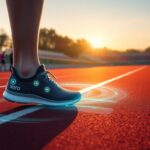
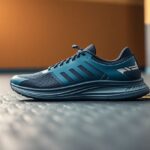
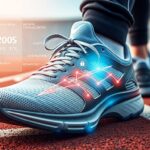

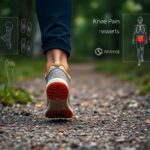
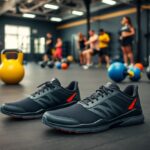


Your exploration of running shoes and their impact on running economy raises such crucial points. I’ve often found myself wavering between the allure of a cushioned shoe and the minimalist approach of barefoot running. My personal experience has been enlightening; shifting to a minimal shoe made me more aware of my form and biomechanics, but it also required a period of adjustment that came with its own challenges, like minor injuries as my body adapted.